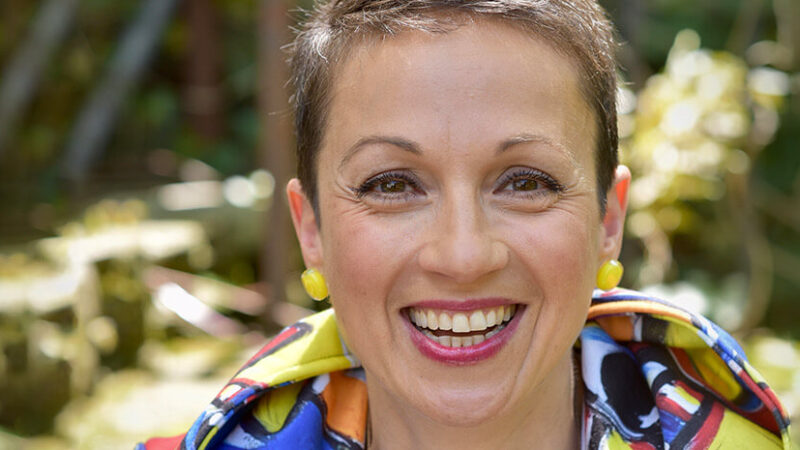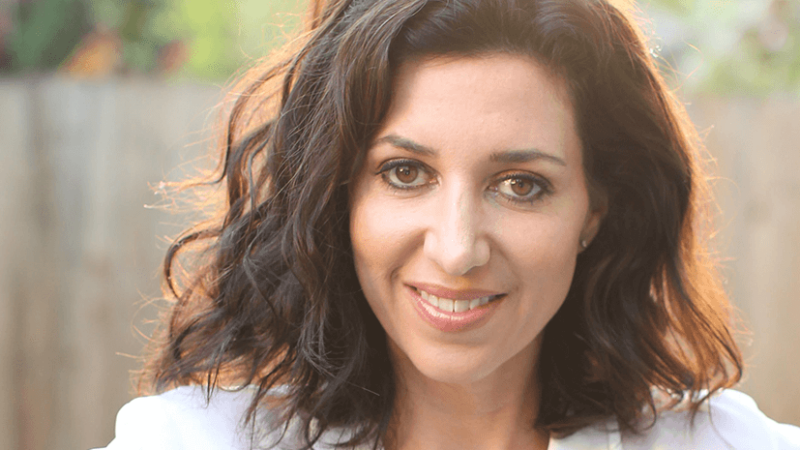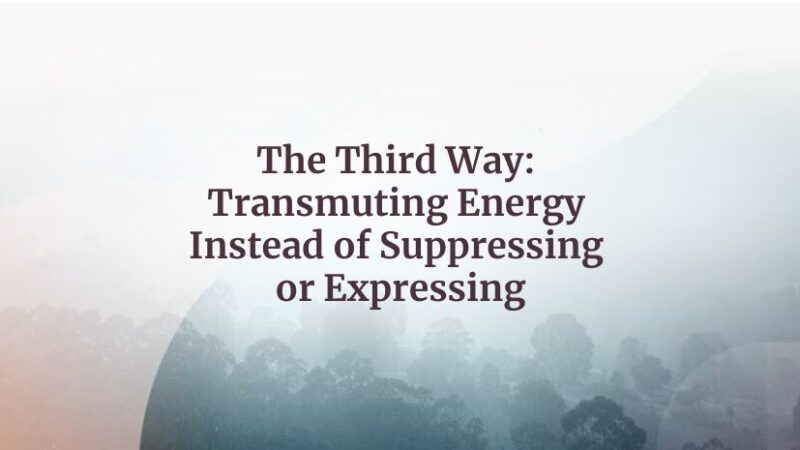-
E117: The Real Work: Letting Go from Within
Michael Singer — October 2, 2025
True spirituality isn’t about mystical experiences or lofty ideals—it’s about honestly facing...
-
Once More: Reflections on Reincarnation and the Gap Between Lives
Tami Simon — September 26, 2025
In this special reflection episode of Insights at the Edge host Tami Simon looks back on her...
-
Honey Tasting Meditation: Build Your Relationship with Sweetness
There is a saying that goes “hurt people hurt people.” I believe this to be true. We have been...
Written by:
Amy Burtaine, Michelle Cassandra Johnson
-
Many Voices, One Journey
The Sounds True Blog
Insights, reflections, and practices from Sounds True teachers, authors, staff, and more. Have a look—to find some inspiration and wisdom for uplifting your day.
Standing Together, and Stepping Up
Written By:
Tami Simon -
The Michael Singer Podcast
Your Highest Intention: Self-Realization
Michael Singer discusses intention—"perhaps the deepest thing we can talk about"—and the path to self-realization.
This Week:
E116: Doing the Best You Can: The Path to Liberation -
Many Voices, One Journey
The Sounds True Blog
Insights, reflections, and practices from Sounds True teachers, authors, staff, and more. Have a look—to find some inspiration and wisdom for uplifting your day.
Take Your Inner Child on Playdates
Written By:
Megan Sherer
600 Podcasts and Counting...
Subscribe to Insights at the Edge to hear all of Tami's interviews (transcripts available, too!), featuring Eckhart Tolle, Caroline Myss, Tara Brach, Jack Kornfield, Adyashanti, and many more.
Most Recent
The Awesome Human Project
Nataly Kogan is an entrepreneur, speaker, and author on a mission to help people cultivate their “Awesome Human” skills by making simple, scientifically backed practices part of their daily lives. The author of the books Happier Now and The Awesome Human Project, she has appeared in hundreds of media outlets, including the New York Times, the Wall Street Journal, TEDxBoston, SXSW, and the Harvard Women’s Leadership Conference. In this podcast, Sounds True founder Tami Simon speaks with Nataly about how we can live in a way that enables us to thrive while we give all of our gifts. They also discuss developing the five skills of emotional fitness; the practice of “struggle awareness” when faced with a challenge; overcoming the brain’s negativity bias, and the art of “courageously talking back to our brains” with kindness and compassion; the five traits of the Awesome Human; a leader as someone who positively impacts another person’s ability to flourish; sharing your emotional “whiteboard” to support the best possible interactions with others; the concept of “surface acting” at work and how it contributes to burnout; investing in a daily check-in with yourself; the power of self-compassion and self-acceptance; self-care as the skill of fueling your emotional, mental, and physical energy; and connecting to your “bigger why.”
A Love Letter to Friendships . . . And How to Break Up...
Erin Falconer is an author, digital entrepreneur, and the editor-in-chief and co-owner of PickTheBrain, one of the most trusted self-improvement communities online. She was named “one of the top digital entrepreneurs in Los Angeles” by Los Angeles Confidential and one of the “Top 10 Women Changing the Digital Landscape for Good” by Refinery29. She has a master’s degree in clinical psychology and is the author of the books, How to Get Sh*t Done: Why Women Need to Stop Doing Everything So They Can Achieve Anything and, with Sounds True, How to Break Up with Your Friends: Finding Meaning, Connection, and Boundaries in Modern Friendships.
In this podcast, Sounds True’s founder, Tami Simon, speaks with Erin Falconer about the unique power of our personal friendships and how we can work to improve them—or let them go if necessary. Tami and Erin also discuss: opening to our inner guidance and the voice of truth within, why taking 100 percent responsibility for our lives leads to 100 percent freedom, taking an audit of your friendships—including what Erin calls “exposing the mediocrity,” self-knowledge and personal energy management, bringing clearer intentionality and deeper commitment to our friendships, difficult conversations and applying the concept of “rupture and repair” to relationships with friends, making amends in previous friendships, Erin’s “friendship questionnaire,” and much more.
A Soberful Life
Veronica Valli is a former psychotherapist who now works as a sobriety coach. With almost 20 years of experience, she has helped thousands of people live happy, healthy lives and reach their full potential by being alcohol free. She’s been the keynote speaker at annual conferences such as Women for Sobriety and Soberistas, and she is the cohost of the popular Soberful podcast.
In “A Soberful Life,” Sounds True founder, Tami Simon, speaks with Veronica about her new book, Soberful: Uncover a Sustainable, Fulfilling Life Free of Alcohol. Tami and Veronica also discuss: making a cost-benefit analysis of your own relationship with alcohol; alcohol-free living as a new norm for our society; finding a community of sober people, and other lifestyle changes; the myth of willpower; honoring an inner call to growth; why we need skills and support (not strength) to quit drinking for good; the five pillars of sustainable sobriety; the importance of boundaries; human connection and the power of vulnerability; the art of finding balance in ever-changing circumstances; understanding how our past shows up in our present; a trauma-informed approach to recovery; two primary childhood needs: attachment and authenticity; how “doing the right next thing” gets us where we need to go; and more.
Customer Favorites
Spring Washam: Partnering with Ancestors for Support a...
Our collective human family faces unprecedented challenges—but we need not face them alone. We can call on the living spirit of our ancestors to collaborate on the creation of a more just and peaceful world. In this podcast, Tami Simon speaks with meditation teacher and author Spring Washam about her book The Spirit of Harriet Tubman and the opportunity at this time for us to rediscover our connection to our sacred and always supportive lineages.
Give a listen as Tami and Spring discuss: Meditation and dropping into “observation mode;” partnering with an ancestral presence; creating your ancestral shrine; fortification and empowerment from the unseen world; receiving a transmission of courage and strength to do what seems impossible; prophetic vision; surrendering to the hard work we’re called to do; compassion, empathy, and the fierce heart; reconciling the heartbreak in our history; healing trauma; and more.
Note: This episode originally aired on Sounds True One, where these special episodes of Insights at the Edge are available to watch live on video and with exclusive access to Q&As with our guests. Learn more at join.soundstrue.com.
Peter Fenner and Jeff Foster: Unconditioned Awareness ...
What is it that is here no matter what’s going on around us? Why does the experience of pure awareness seem so hard to hold on to? Tami Simon speaks with Sounds True authors Peter Fenner and Jeff Foster about the nature of awareness and how we can begin to offer the gifts of our realization to those around us. (75 minutes)
E114: The Third Way: Transmuting Energy Instead of Sup...
The essence of spiritual growth is learning to work directly with your inner energy rather than trying to affect it indirectly by controlling outer circumstances. When the outer world does not meet your preferences, your inner energy gets disturbed, and you either try to suppress it (which creates blockages) or reactively express it (which can cause its own problems). Instead, by relaxing in the face of the disturbed energy, welcoming it, and allowing it to rise and purify—the energy can be transmuted into spiritual growth. Practiced steadily in everyday life, this returns you to the seat of the Self, where joy is natural because the energy flow is unblocked.
© Sounds True Inc. Episodes: © 2025 Michael A. Singer. All Rights Reserved.






